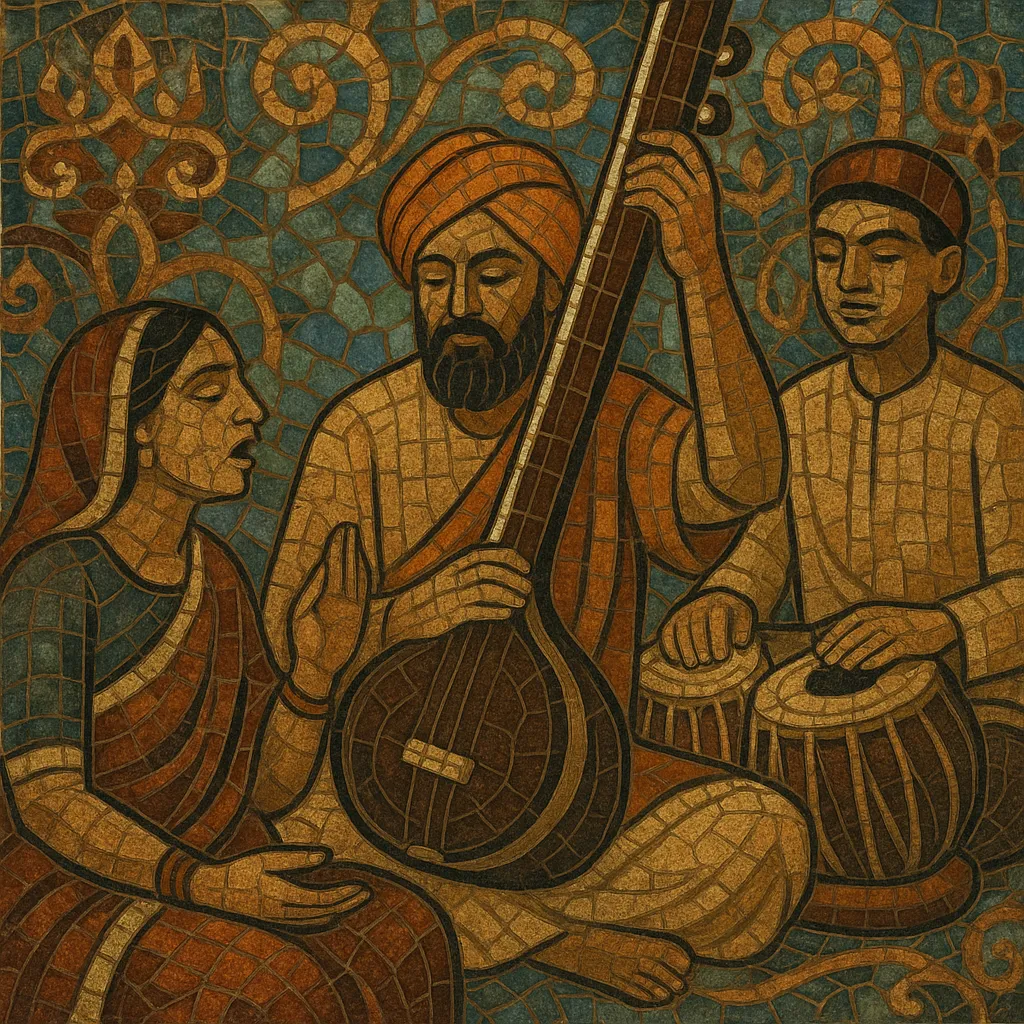Dhrupad is the oldest surviving vocal form of North Indian (Hindustani) classical music, prized for its meditative depth, austere aesthetics, and uncompromising focus on raga purity.
A typical performance opens with a long, unmetered alap that patiently explores the raga’s tonal universe through sustained tones, meend (glides), and powerful gamak (ornaments), often articulated with "nom–tom" syllables. After the alap, a fixed composition (bandish) in four parts (sthayi, antara, sanchari, abhoga) unfolds in a tala such as chautal (12 beats) or dhamar (14 beats), accompanied by the barrel drum pakhawaj and a tanpura drone.
Texts are frequently devotional and composed in Braj Bhasha or Sanskrit, addressing deities like Shiva or Vishnu, or praising royal patrons. Historically associated banis (style-streams) include Gauri, Khandar, Nauhar, and Dagar, with the Dagar lineage especially noted for the expansive, contemplative alap. While primarily a vocal genre, instruments such as the rudra veena also embody dhrupad aesthetics.
Dhrupad crystallized in North India by the 16th century, drawing on older temple and courtly song-forms and on Vedic recitation practices. Its devotional roots and emphasis on disciplined intonation reflect a long lineage of sacred and princely patronage.
Under the Gwalior court of Raja Man Singh Tomar (late 1400s–early 1500s), dhrupad matured into a refined classical form. During the Mughal era, especially at Akbar’s court, figures such as Tansen elevated dhrupad to imperial prestige, shaping raga vocabularies and performance conventions that still resonate today.
Tradition identifies four major banis—Gauri, Khandar, Nauhar, and Dagar—each emphasizing distinct vocal timbres, rhythmic attack, and ornamentation. Over time, the Dagar lineage became particularly renowned for a vast, contemplative alap and a highly nuanced treatment of swara and shruti.
From the 18th–19th centuries onward, the lighter, more florid khyal style eclipsed dhrupad at many courts. In the 20th century, however, the Dagar family, All India Radio, and dedicated pedagogues helped revive dhrupad. The late 20th and early 21st centuries saw renewed global interest through tours, recordings, and institutions, ensuring both faithful transmission and thoughtful innovation within the tradition.


